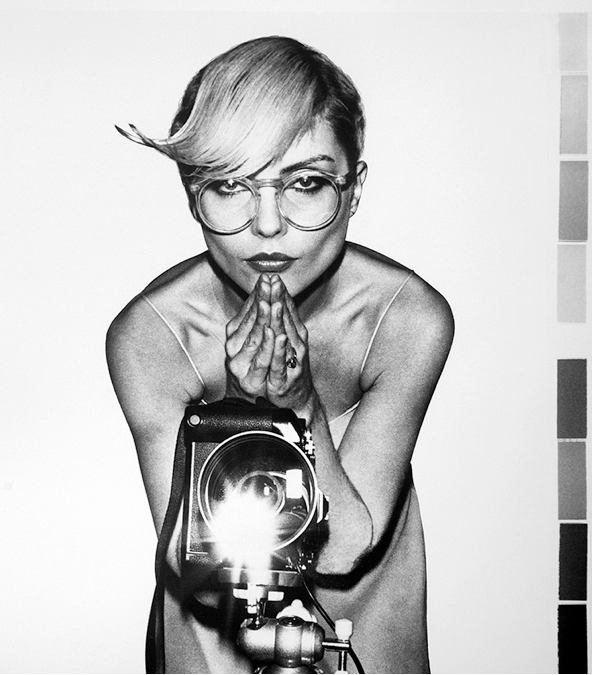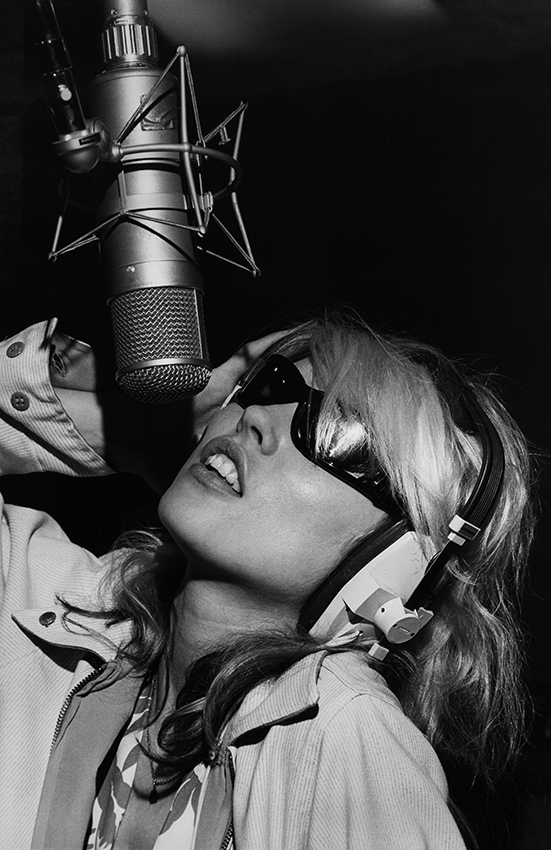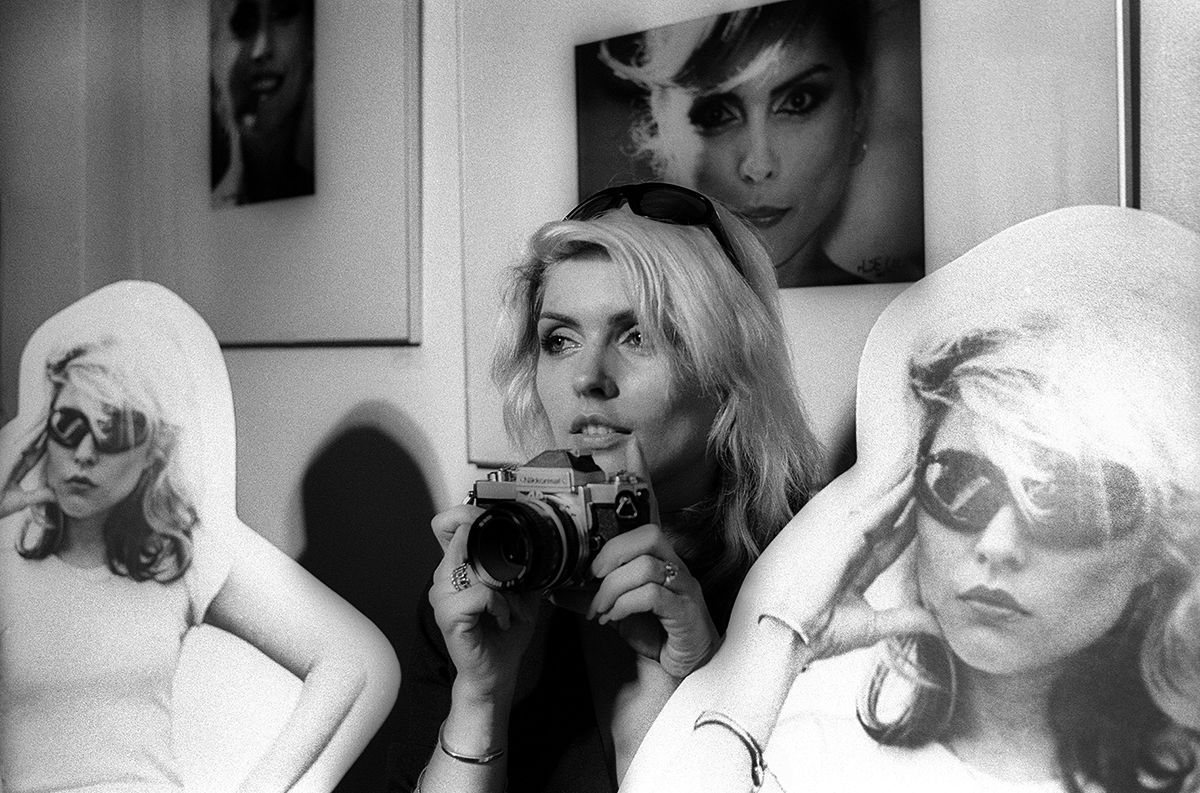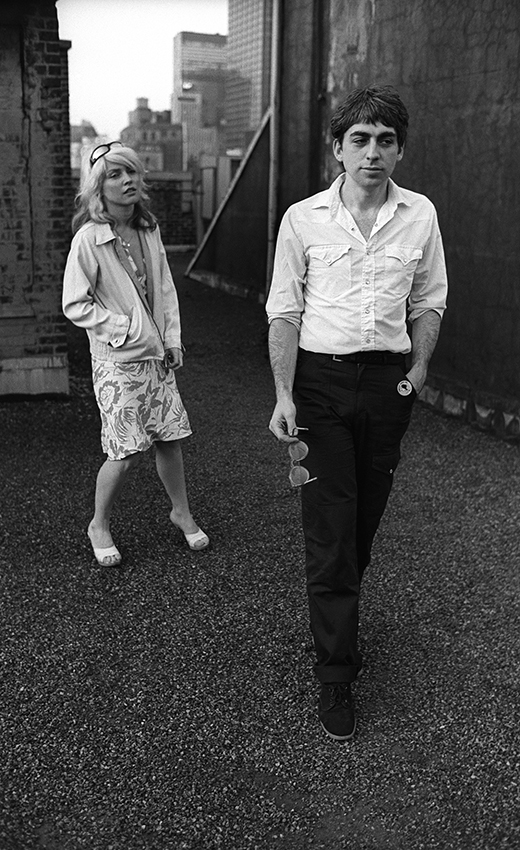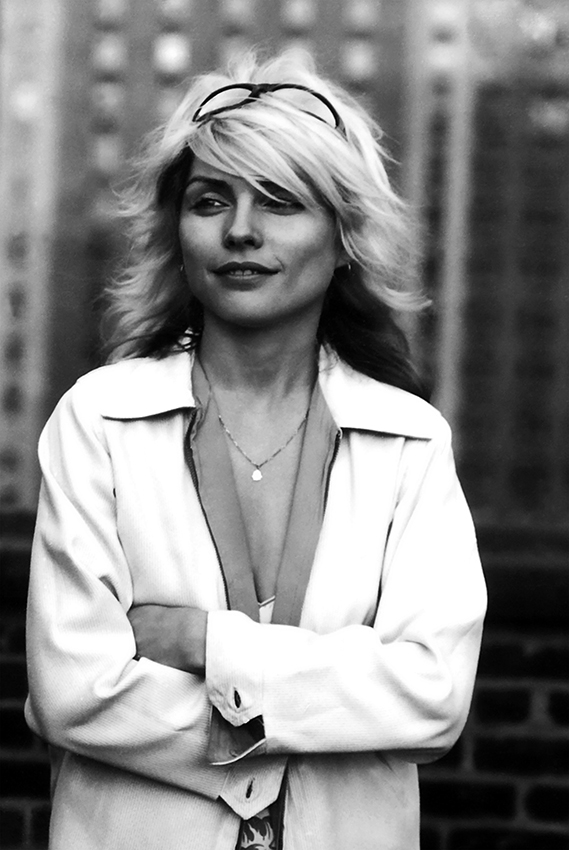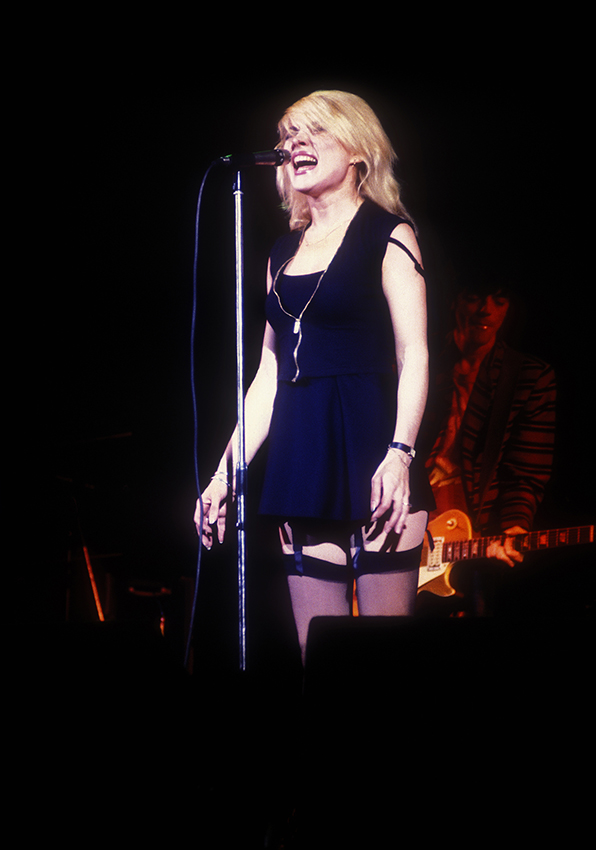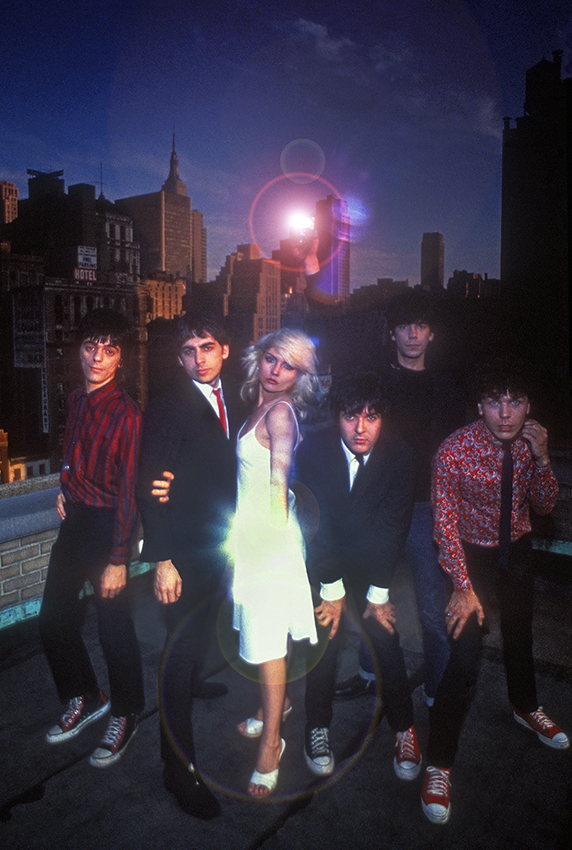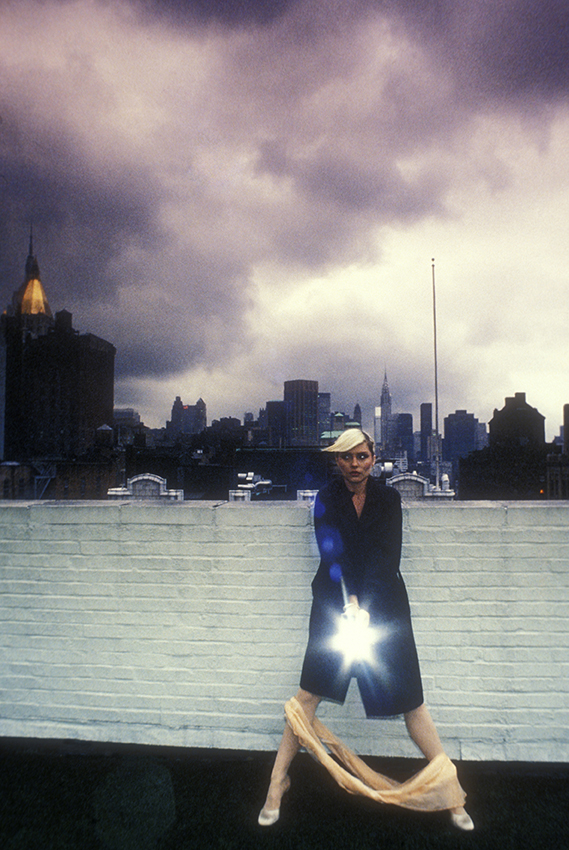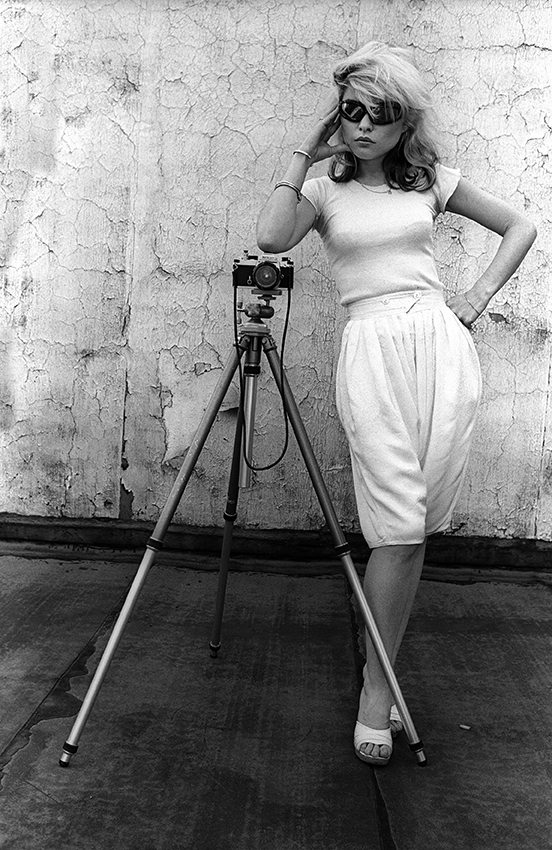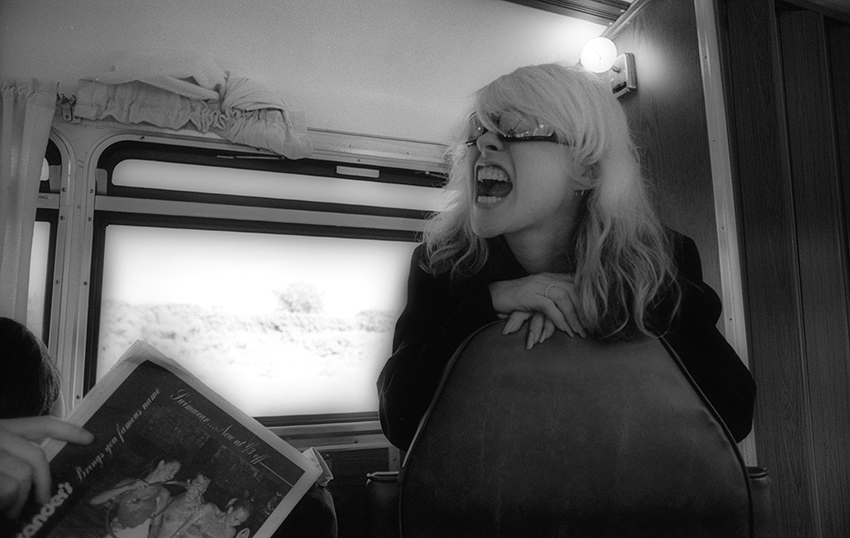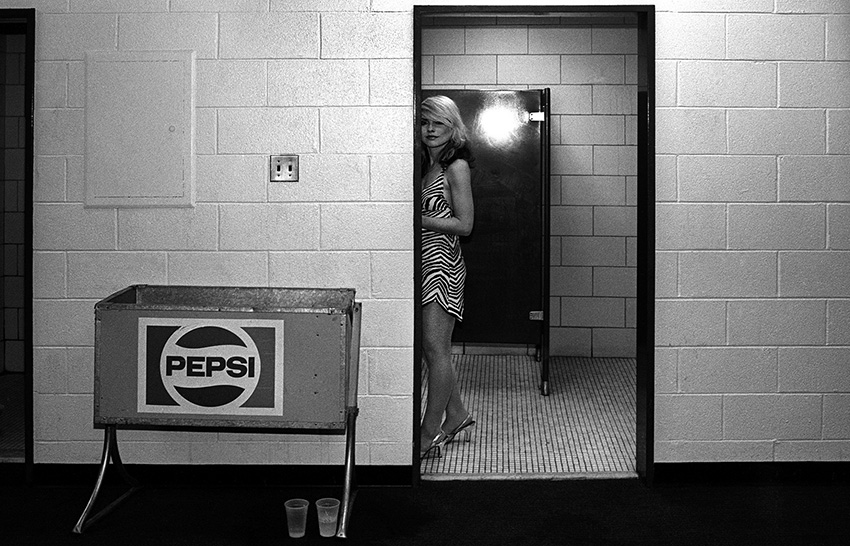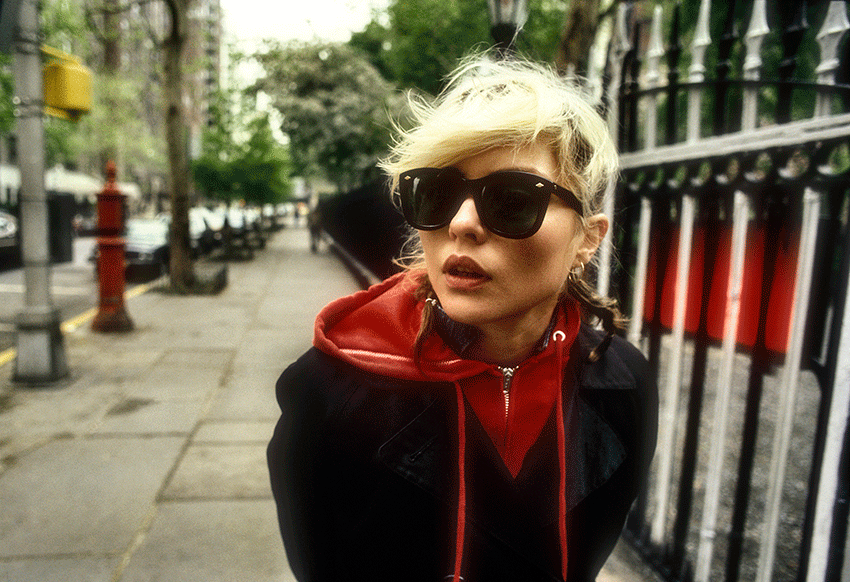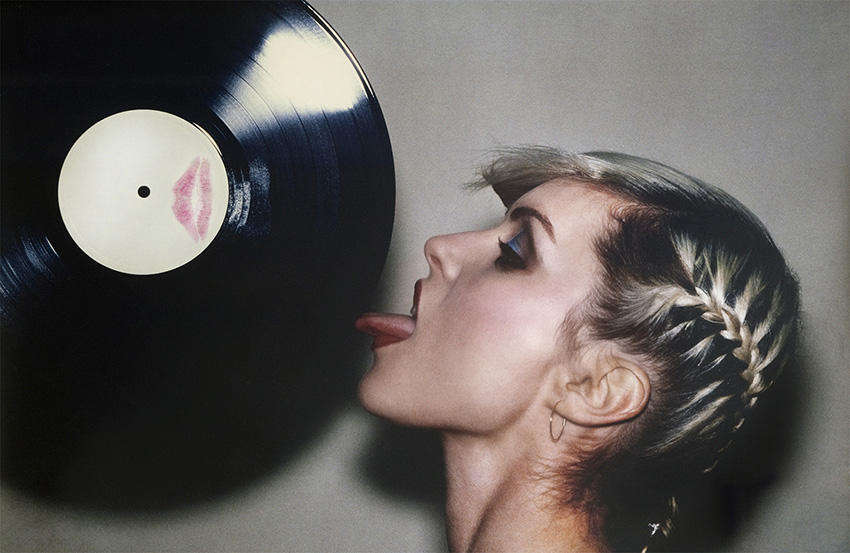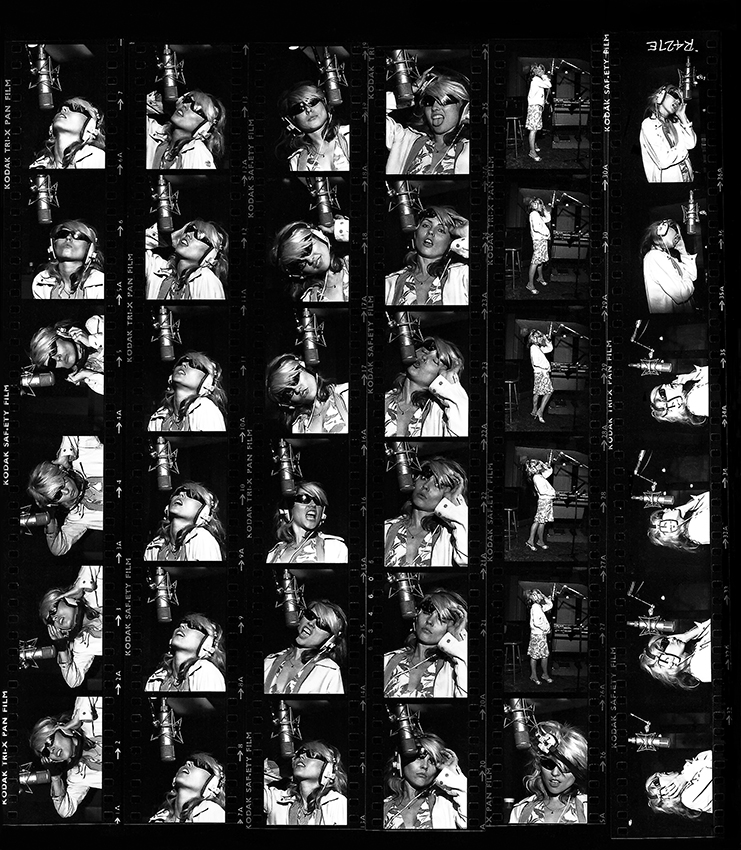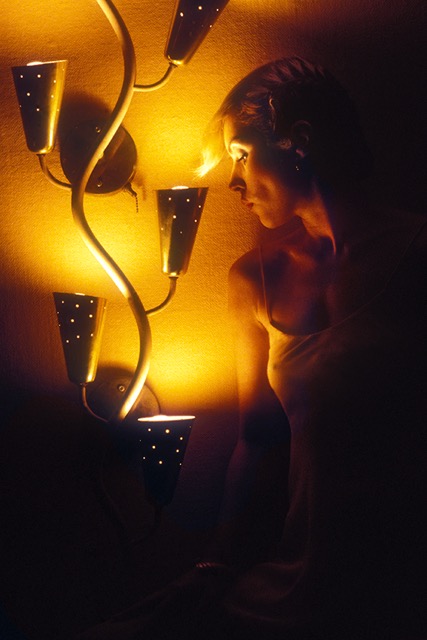Picture This
Blondie by Martyn Goddard
16 August to 24 September 2016
Picture This presents Martyn Goddard’s photographs of Blondie. Taken in New York and London in 1978, these intimate portraits of Debbie Harry and the band capture them in the recording studio for their Parallel Lines album; on stage and offstage in Philadelphia supporting Alice Cooper; at New York’s Palladium Theatre; in NYC’s Gramercy Park hotel for a Sunday Telegraph cover feature; on a New York rooftop for a shoot for the cover for their ‘Best of Blondie’ LP; and finally in London for a gallery launch to promote the release of their ‘Picture This’ single.
Martyn’s signed limited edition photographs are available to purchase in a range of sizes.
Click on an individual image to see price and size options.
Martyn Goddard sets the scene on his sessions with Blondie in 1978
In May 1978 I took a £99 Freddie Laker DC10 flight to New York to spend a week with Blondie. I stayed in the Gramercy Park Hotel and shot Debbie Harry for a piece which became a cover story for the Sunday Telegraph Magazine. On that same trip I travelled with the group to Philadelphia when they were the support band for Alice Cooper, and also enjoyed photographing their one-off gig at the Palladium in New York.
My second visit to photograph the band took place a month later, when I returned to New York in late June 1978, and found myself in the Record Plant studios in New York City with them. They were in the studio recording their third album Parallel Lines. When I arrived at the recording studio for the first photo session for their record company Chrysalis – one of several planned for the week – I could sense a tense atmosphere. As a photographer, shooting in recording studios was always a problem on a technical level with period camera equipment and film stock, in what were very dark functional spaces.
Additionally, one had to work around the process of recording a record. It was soon evident that Blondie, and Debbie Harry in particular, were having issues with record producer Mike Chapman. Two conflicting forces were in play: the group’s New York punk heritage (and their one take and done attitude) and Mike Chapman’s quest for West Coast perfection. While I shot the images you can see on the contact sheet, Debbie would be singing short vocal passages which were over-dubbed time after time. This explains the various facial expressions she was making to the camera. Stiflingly boring in production for all members of the band, the album was to take six weeks to record. Despite the record companies doubts about the album, it produced hit singles and reached number 6 in the US Billboard chart and number 1 in the UK album chart. The rest is history.
In August 1978, in association with Chrysalis Records and the Telegraph Sunday Magazine, I staged the exhibition ‘Blondie in Camera’ at the Mirandy Gallery in Glentworth Street, London. It was a collection of the images from the two shoots in New York that year. The exhibition opening was to be the media launch of the latest single ‘Picture This’ and the presentation of a silver disc for the Plastic Letters album.
At 2.30 pm on 14 August the band arrived, making their way through the crowded street full of fans who had been waiting all that morning. I certainly enjoyed the event which was given serious media coverage and we were able to sell signed prints for the bands favourite charity supporting diabetes research. Over the two weeks of the exhibition, three life size cut outs of Debbie Harry and the white label ‘kissed’ LP that I used for the Parallel Lines picture disc shot all went AWOL!
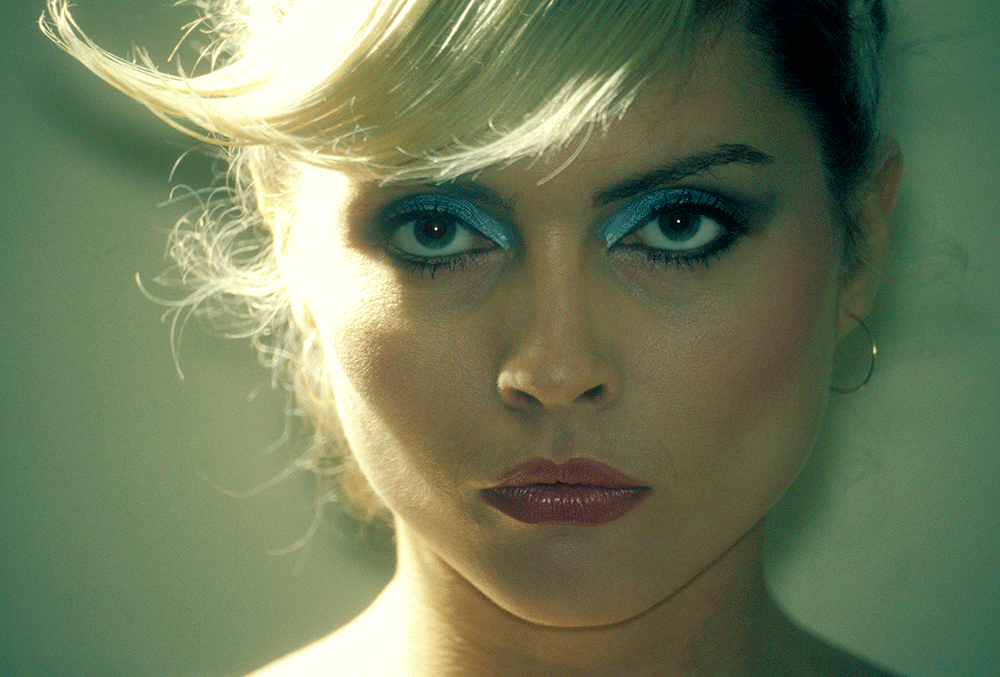
Debbie Harry close up
Martyn Goddard remembers:
” This portrait of Debbie Harry was taken for the telegraph Sunday Magazine cover, and was also used on a poster at the time. We shot it in a room at the Gramercy Park Hotel in New York. The hairstyle is very distinctive – the stylist was from the Schumi salon in London, and was in New York for fashion week.”
Debbie Harry at the ‘Picture This’ launch
Photographed in August 1978 in London by Martyn Goddard at the exhibition ‘Blondie in Camera’ at the Mirandy Gallery in Glentworth Street. This was a showcase of images from Martyn’s two shoots in New York that year, the media launch of the latest single ‘Picture This’ and and also saw the presentation of a silver disc for the Plastic Letters album.
In the photograph you can see the lifesize cut-outs that were subsequently stolen !
Martyn Goddard
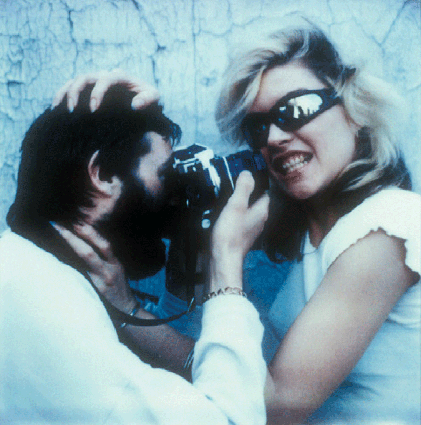
Martyn graduated from Harrow College of Technology & Art in the early 1970’s and a period assisting acclaimed photographer Gered Mankowitz, Martyn Goddard became a regular face on the new wave music scene of the seventies and early eighties. This was an era of LP picture discs with serious budgets requiring creative photography. Photographing acts such as Blondie, The Jam, The Cure, Sham 69, Ian Dury, and Toyah lead to commissions from Queen and Elton John’s Rocket Records in the rock mainstream. While working for the Sunday Telegraph Magazine, You and Sunday Times Magazine in the 1980’s Goddard shot portraits and features with recording acts such as Genesis, U2, Jethro Tull, UB40 and Wham, progressing to portraits of great writers, artists, actors and politicians. A period of working with Wham in the late 1980’s, including their groundbreaking tour of China, closed a chapter of life within the music business. Martyn went on to work for Car magazine, creating new techniques of automotive and travel photography.
Martyn sums it up nicely: “It has been an extension of my teenage dreams of music and fast cars that my chosen profession has given me the ability to be a part of, as I can’t play a note of music and only managed fourth place in my ten-year career as a historic rally driver. Today we are bombarded by imagery via social media, most of a throwaway nature, around a trillion taken in 2015 alone. I continue using the latest digital cameras, processing the images on my computer giving me greater control, which has been the holy grail of every photographer which was only dreamt of in the classic film stock era. Enzo Ferrari was often asked which was his favourite Ferrari; he replied his marques next automobile. I have my favourite photographs but still delight producing new images in new ways. As they say, you are only as good as your last assignment.”

